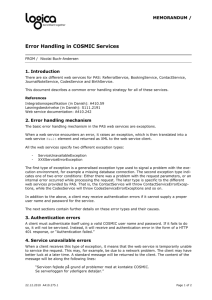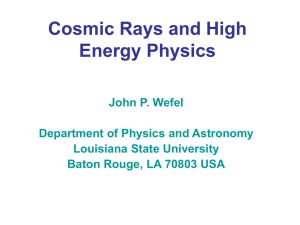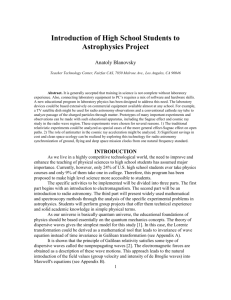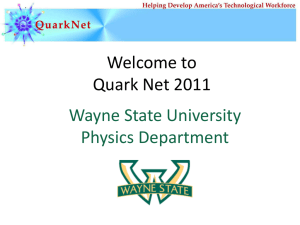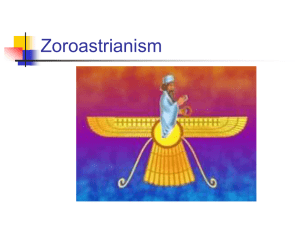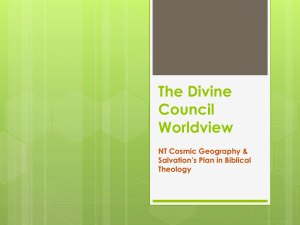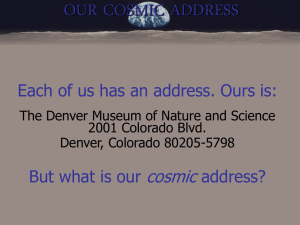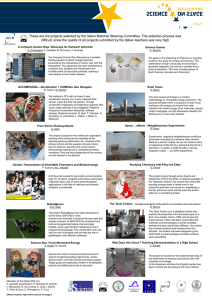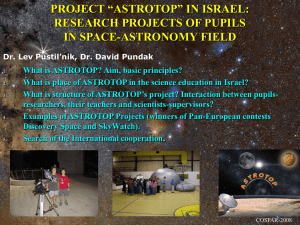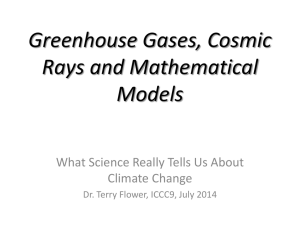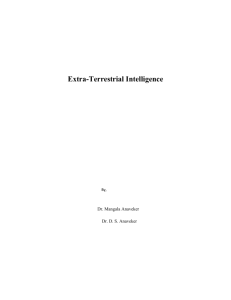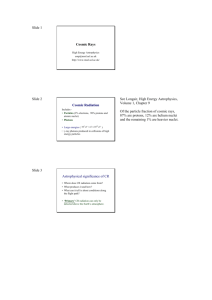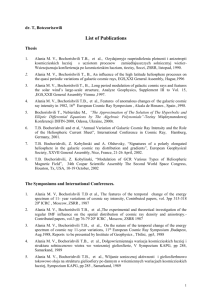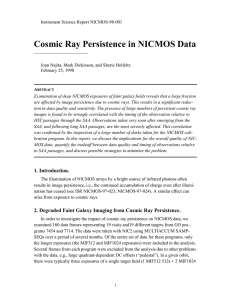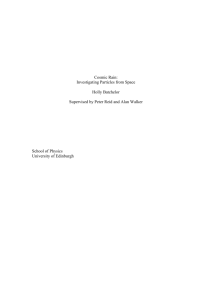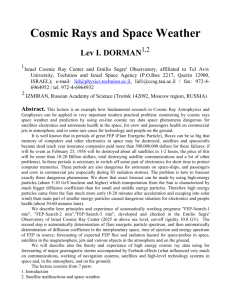Velarde - 4th School on Cosmic Rays and Astrophysics
advertisement
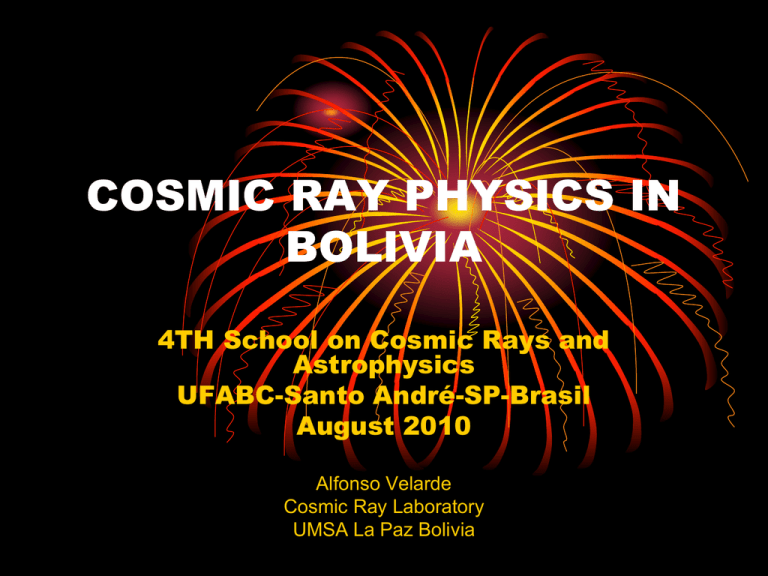
COSMIC RAY PHYSICS IN BOLIVIA 4TH School on Cosmic Rays and Astrophysics UFABC-Santo André-SP-Brasil August 2010 Alfonso Velarde Cosmic Ray Laboratory UMSA La Paz Bolivia THE BEGINNING • THE PION DISCOVERY • 1946: Second war end • Prof. Cesar Lattes from the Sao Paulo University joint to the Prof. Cecil Powel group in the Bristol University to work with a new type of emulsion chambers developed by Ilford to obtain tracks of charged particles. • • • • Ones in Bristol Lattes and Occhialini propose to expose that new nuclear emulsions at high altitude montains. First they expose some plates at Pic du Midi in the Pyrenees and found an unusual event: one stopping meson and, emerging from its end, a new meson. Two diferent mesons (particles with a mass intermediate between that of proton and electron) To obtain more events Lattes search in the Department of Geography of Bristol university for a higher altitude place and found that there was a meteorological station at about 5.000 m.a.s.l. at mount Chacaltaya very near to La Paz (Bolivian capital). • Lattes expose the plates at Chacaltaya and back in Bristol found about 30 double meson events. • A fundamental process was discovered: the decay of pion into muon. • The heavier meson (pion) was identified with the Yukawa particle and its secondary (muon) with the Carl Anderson´s mesotron. • A neutral particle of small mass was needed to balance momentum. • Due to this discovery, Prof. Hideki Yukawa recived the Nobel Price in 1949, and Cecil Powell in 1950. • So the discovery of pion and meson particles related to the nuclear force was the beginning of Cosmic Ray Physics in Bolivia. • These discovery made Mount Chacaltaya famous for Cosmic Ray experiments. • In 1952 the La Paz San Andres University construct the Chacaltaya Cosmic Ray Laboratory. NOWADAYS EXPERIMENTS BASJE Bolivian Air Shower Joint Experiment • • • • • Start: 1962 Collaboration with Tokio Technological Institute First main researchers: B.Rossi, Kohichi Suga, Ismael Escobar Objective: Study of extensive air shower generated by prikmaries cosmic rays with energies > 1014 eV The study of the spectrum in the range 8x1014 - 4x1017 eV shows that the slope of the primary cosmic ray energy spectrum changes. Todays BASJE Array • 68 scintillation detectors installed in an area of 700m × 500m with separations of 75 m. • New air shower array at Mount Chacaltaya (5,200m above sea level) to observe primary cosmic rays with energies greater than 1015 eV. • In BASJE previous experiments, we measured nuclear composition of primary cosmic rays in the knee region, and showed that the average mass (logaritmic) of cosmic ray nuclei increases with energies below and above the knee, and dominated by heavier nuclei as iron at 1016 eV. • The new air shower array has been constructed in order to measure cosmic ray composition above the knee SYS Saitama-Yamanashi-San Andres • First main researcher: • Prof. T Matano NEUTRON MONITOR NM64 • Sensitive to n and p An example of a solar flare detected with the NM64 SOLAR NEUTRONS TELESCOPE Colaborattion with Solar-Terrestrial Environment Laboratory, Nagoya University, Japan The Chacaltaya telescope n Anticoincidence scintillators p LAGO Large Aperture GRB Observatory • A GRB is a short time flux of cosmic gamma rays. Some examples detected in satellites Arrival direction of GRBs is isotropic Energy spectrum slope -2 How to detect E>1GeV GRBs? • LAGO search for GRBs with energies>1 GeV with ground level detectors by the single particle technique. • This consists in the search for significant excesses in the detector counting rates due to the remainig secondary particles produced by the GRB in the atmosphere. LAGO ARRAYS • • • • • • Para alcanzar una sensibilidad razonable, se han seleccionado sitios de altura; Sierra Negra (4,650 m.s.n.m.), Puebla-México Chacaltaya, (5,230 m.s.n.m.), La PazBolivia. Pico Espejo (4,765 m.s.n.m.), MéridaVenezuela. Marcapomacocha Peru, cerca a Lima 4.400(m.s.n.m.) AUGER en MalargüeArgentina. Chacaltaya´s LAGO WCDs array Thank you

